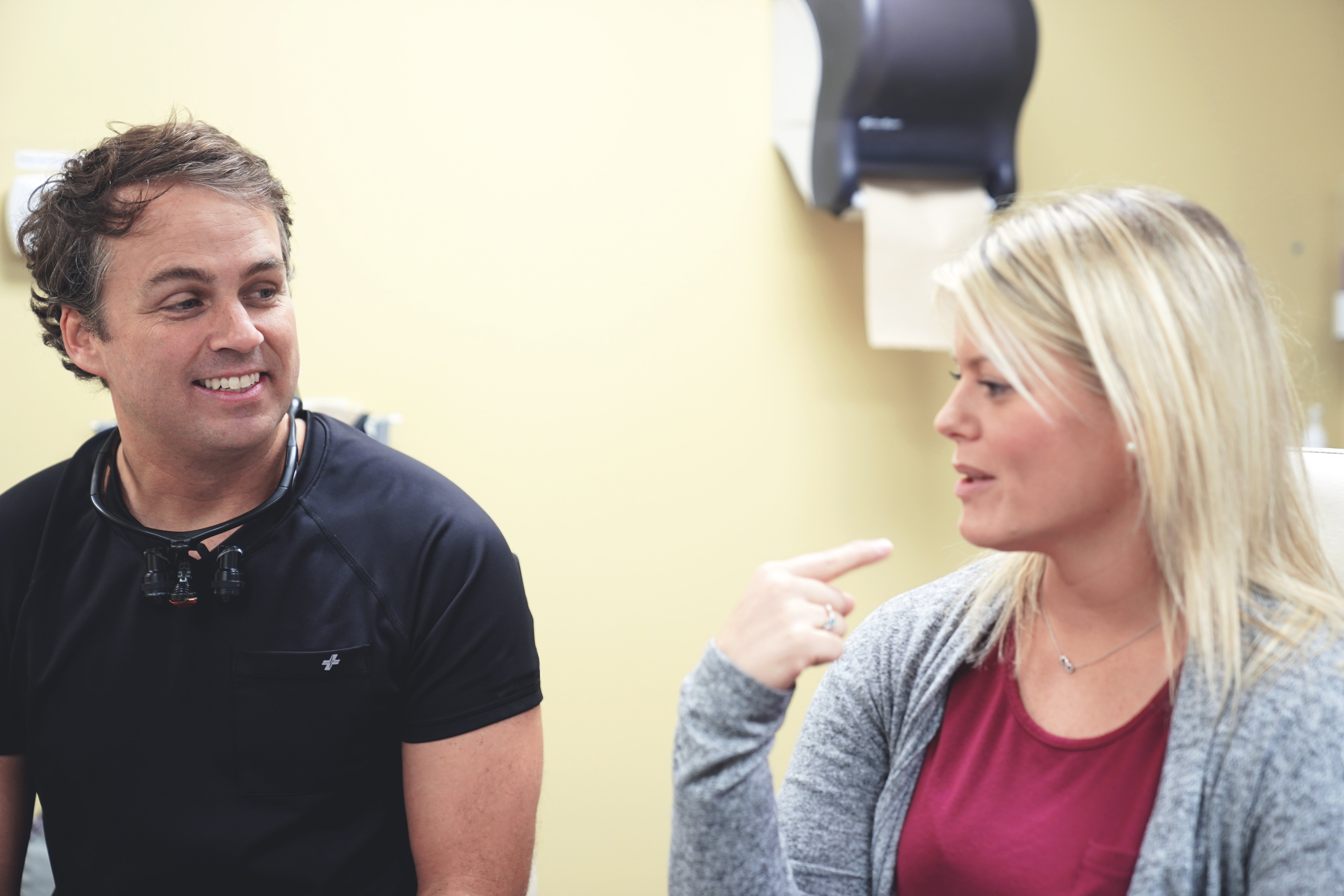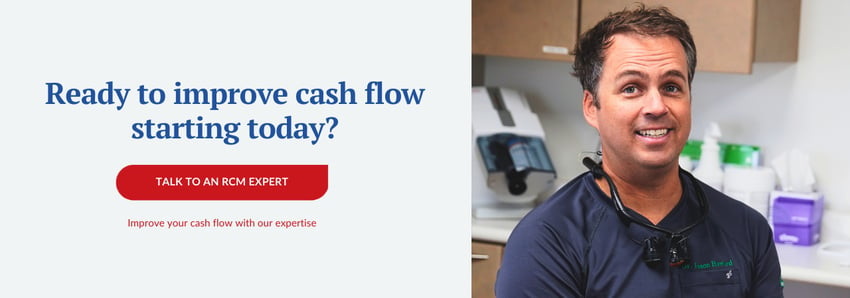Calculating dental patient out-of-pocket cost vs using predeterminations


Besides great dental care, what do dental patients want? If you’re at the front desk, most patients will ask you: “What will my dental procedures cost?” That’s why dental teams will oftentimes use predeterminations to inform a patient ahead of time what their procedure is going to cost them.
At Dental ClaimSupport, we usually don’t advise practices to use predeterminations due to how they decrease efficiency at the practice, delay treatment, and are oftentimes inaccurate. However, we do believe there is a time and place for predeterminations, it’s just dependent on the procedure and patient.
In this article, you will learn the truth about predeterminations, and the difference between calculating dental patient out-of-pocket costs versus using predeterminations. You will then be able to decide which solution to knowing the cost of a procedure ahead of time works for your practice.
Predeterminations from insurance companies
First, let’s go over what exactly a predetermination is.
A predetermination is a process where a dentist submits procedures to the payer before the treatment has taken place. Think of it as a hypothetical “claim” to the insurance company: if we were to do these procedures on this patient, what would you pay?
In short, the insurance company reviews the predetermination, processes it no differently than an actual claim, and informs the office of its determination. The office is told what procedures will be covered, how much will be paid for each procedure, and how much the patient will come out of pocket.
Why do dentists ask for predeterminations?
With what you’ve already read, let’s state the obvious. Predeterminations can be useful when communicating to the patient approximately what they will owe the dental practice once the procedure is over. Emphasis on approximately.
However, predeterminations should only be used for large, uncertain patient cases with rare procedures or if a patient specifically asks for them.
Predeterminations are not always 100% accurate representations of what the patient will owe, though. You must communicate this to the patient if you plan on using predeterminations.
Dentists should trust their expertise and be confident and deliberate with their medical advice. If they say a procedure should be done, then the patient should do it, and a predetermination shouldn’t be the deciding factor. The patient’s health depends on it, and too often a patient’s insurance holds their dental health hostage.
Furthermore, office managers and insurance coordinators should trust their insurance verification process. If patients have coverage for procedures they need done, there is no need for a predetermination.
Problems with predeterminations
There are a few problems we have seen when dentists insist on getting predeterminations from insurance companies.

1. Patients will see the number on the predetermination and fixate on it
As we just said, predeterminations are not always accurate calculations of what the cost of a procedure might be for a patient. This inaccuracy could happen due to claim denials, or even changes in procedure codes once the dental services are performed.
There is always a disclaimer on the predetermination that says this is not a guarantee of payment. Whatever the reason, you have to communicate that this is an approximate number to your patients, and no matter what the number ends up being, they are responsible for the cost.
It’s easy for patients, who do not usually understand their insurance benefits in-depth, to see a number you’ve laid out for them and stay fixated on that number. For some, this is what they will budget for when they visit you for their procedure.
To prevent this, just make sure you emphasize that this number is an estimate, not an exact price and they will still be responsible no matter what the number is.
2. Predeterminations are time-consuming
Adding a predetermination to your process only makes more work for your team. You have to file the predetermination the same way you’d file a real insurance claim. So it adds extra steps to your process because you also have to wait to get the results.
Of course, if you schedule patients far enough in advance, this might not be a problem for you. But it’s similar to the process of filing a claim, except you’re not going to be paid and you haven’t even performed the service yet.
Calculating dental patient out-of-pocket costs yourself
You’re easily able to calculate dental patient out-of-pocket costs if you have a buttoned-up insurance verification process.
Insurance verification is when you check a patient’s insurance coverage and benefits before a patient’s date of service to ensure coverage for services, right? Well, not only are you checking to make sure the patient has active insurance coverage, but you can see which procedures are covered and just how much each procedure is covered.
You can then share this number with the patient, again, emphasizing that there’s always a chance the insurance could pay the claim differently than what’s expected. It’s an unfortunate truth about filing insurance claims… you don’t always know what you’re going to get.
Why do dental teams choose to calculate dental patient out-of-pocket costs?
A reason this is an appealing solution to some dental teams is because they are relying less on the insurance company to process a predetermination in a timely manner. If you have experience working with insurance, you know how annoying and time-consuming it can be to wait on processed claims.
Sending a predetermination is like submitting a claim before the actual claim you’ll have to send after the procedure. It’s an extra piece of your process that depends on when insurance decides to get back to you.
Dental teams (and our billers) find calculating out-of-pocket costs manually or through your software is more efficient because you don’t have to wait as long for a result (you can find out the result immediately!) and you can move through your insurance verification and billing process quicker.
Problems with calculating dental patient out-of-pocket costs
Calculating dental patients’ out-of-pocket costs yourself is not always a perfect solution. There are still some issues with this solution to getting a “preview” of the patient’s cost as well.
1. It’s math that the dental team does not want to do
We’re not going to lie to you: if you choose this solution, you’re going to have to do a bit of math! Also, you’re going to have to fully understand how your patient’s benefits work… which truly, whoever is handling patient billing should know this information already.
It does require a bit of extra work to know the correct calculations of the patient’s costs, which can make it easy to depend on software to do it for you. Let’s get into that.
2. Dental team members depend on software to do calculations for them
Practice management software calculates patient out-of-pocket costs for you, but you shouldn’t be dependent on software to make that calculation for you.
You should have a basic understanding of how the software determines your patients’ costs so that you can verify that they are correct, but here is the real takeaway: Know how to be sure you’re communicating accurate costs to patients.
If you can clearly explain the math behind how their insurance coverage works, and how things like downgrades will affect their portion of the cost or how they should divide up their visits, you will have more grateful patients and less awkward back-and-forth about money.
Here is a bare-bones example of how to calculate the patient out-of-pocket cost:
Your patient comes into your dental office with their insurance. They are in need of one filling that costs $100. Their insurance covers 80% of their filling, so the patient is responsible for the other 20% of the cost. Barring no deductible, the calculation is quite simple:
Insurance benefit:
$100 x 80% = $80
Patient responsibility:
$100 - $80 = $20
Pretty easy, right? This isn’t typically a calculation that people get wrong, but it’s still important to understand the basics.
You can dive into deeper examples that include deductibles and downgrades in our Learning Center.
Choose the option that will help your practice be more efficient and collect more
You can probably tell, but we are partial to calculating patient out-of-pocket costs instead of getting predeterminations from insurance companies.
You can avoid relying on insurance companies through this choice, taking back the power the insurance companies so frequently hold. You’re more capable than you think of cultivating and communicating this information to the patient all by yourself.
Dental ClaimSupport is always willing to help practices with predeterminations if that is what they choose. It’s just important that the practice considers both options and always tries to work efficiently.
To learn more about 3 problems predeterminations can cause for your dental practice, visit our Learning Center.
Related Posts
Dental revenue resources from Dental Claim Support

